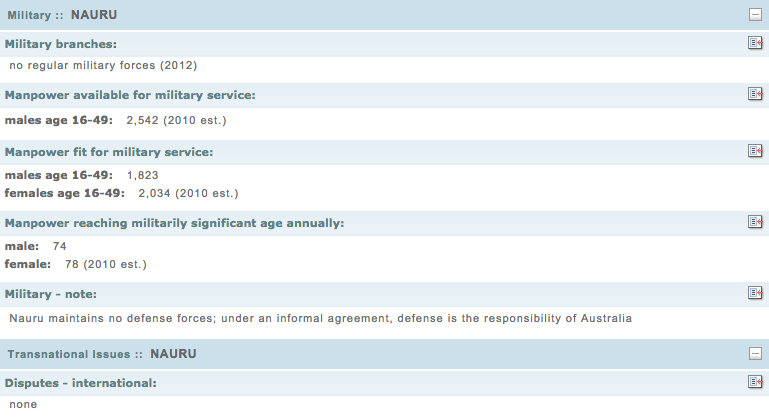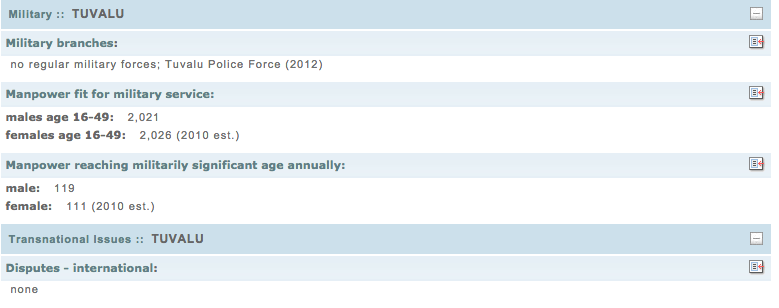Partnering with the Kiwis, NSA “Protects” Us from Climate Resistors?
The Intercept has what will be the first in a series of partnering articles with New Zealand’s great surveillance reporter Nicky Hager on the role of New Zealand’s SIGINT agency, Government Security Communications Bureau, in the Five Eyes dragnet. As part of it, they target south Pacific islands that its hard to understand as a threat to anyone.
Since 2009, the Government Communications Security Bureau intelligence base at Waihopai has moved to “full-take collection”, indiscriminately intercepting Asia-Pacific communications and providing them en masse to the NSA through the controversial NSA intelligence system XKeyscore, which is used to monitor emails and internet browsing habits.
[snip]
The documents identify nearly two dozen countries that are intensively spied on by the GCSB. On the target list are most of New Zealand’s Pacific neighbours, including small and vulnerable nations such as Tuvalu, Nauru, Kiribati and Samoa.
Other South Pacific GCSB targets are Vanuatu, the Solomon Islands, New Caledonia, Fiji, Tonga and French Polynesia. The spy agency intercepts the flows of communications between these countries and then breaks them down into individual emails, phone calls, social media messages and other types of communications. All this intelligence is immediately made available to the NSA, which is based in Maryland, near Washington, DC.
Effectively, the NSA forces GCSB to spy on these teeny tiny countries in the middle of the Pacific in order to benefit from our dragnet.
And for what?!?!
Even the CIA acknowledges that Nauru has no military, and it somewhat optimistically claims Nauru has no international disputes.
The same is true of Tuvalu.
Both have a dispute, of course. The rich lifestyles of the rest of the world (which Tuvalu shared in for a period of Phosphate exploitation) threaten to wipe these nations off the face of the earth with rising ocean levels. To the extent they might be threats to the US, it is because the citizens of Tuvalu and Nauru speak with the moral authority of some of the first peoples who will be wiped off the face of the earth because of climate change.
Aside from that, Tuvalu has its own Internet domain; Nauru has become a tax haven.
Still, it’s hard to believe that the most powerful country in the world, which has an active military population that is 136 times the population of these countries, is really threatened by either of these countries.
But nevertheless, we’re forcing New Zealand to get “full take” from them, as the price of admission to our spying club.




“…threaten to wipe these nations off the face of the earth with rising ocean levels”
Where’s the evidence of that?
Per Wikipedia:
“As low-lying islands lacking a surrounding shallow shelf, the communities of Tuvalu are especially susceptible to changes in sea level and undissipated storms.[200][201][202] At its highest, Tuvalu is only 4.6 metres (15 ft) above sea level, and Tuvaluan leaders have been concerned about the effects of rising sea levels for a few years.[203][204] It is estimated that a sea level rise of 20–40 centimetres (8–16 inches) in the next 100 years could make Tuvalu uninhabitable.[198][199]”
Nauru is different; they will just float away: “Nauruans are the most obese people in the world.[81] 97 percent of men and 93 percent of women are overweight or obese.[81] In 2012 the obesity rate was 71.7%.[83]”
I repeat, where’s the evidence of ocean level rise?
.
Actually, these small Pacific islands live in a dynamic system with storms and currents, and shifting sands. Reef islands change shape and move around in response to shifting sediments, and many of them are growing in size, not shrinking.
.
The problem for fixed installations on small islands is that they may be on part of the island that is shrinking, not growing. I am not too concerned with Tuvalu, with less than 10,000 people, half the land size of Washington DC, and still with forested land. In fact its economy is growing at 2%, same as the US last quarter.
1. The article did not say the oceans were rising, only that that was “threatened”.
2. Where’s the evidence that a small island with buildings and housing and roads etc. can reshape itself so as to grow taller (not just moving around sideways) and thus be functionally the same when the water level rises a bunch?
you need to read science sites, not political-right-wing sites.
You are telling me what to read? Who the hell are you?
.
I’m asking for evidence, that’s all, not shit from you, dumbass.
You seem like a pleasant person.
When you’re not here.
Don’t you think the New Zealand spies feel kind of pissant insignificant? As if I were organizing a big meeting and I said to A, “You get us a good venue”, and to B, “You find us some good speakers”, and to C, “You get us some good food” — and then I said to you, “You make sure we have pretty name tags for everyone.” Except it’s, “You spy on world leaders”, and “You spy on Europe”, and “You spy on China”, and “New Zealand, you can spy on Tuvalu and Nauru”. But I guess they can’t do without Big Brother, can they? Poor little ones.
Christ. Tuvalu is a member of the British Commonwealth, in a 2012 interview Tuvalu’s Governor revealed that many of younger Tuvaluans are leaving because of climate change, storms are more frequent and worsening and apparent sea level rise (of course Tuvaluans aren’t serious, Polynesians have only inhabited the place for 2,000 years, last week Jim Inhofe made a snowball and it didn’t melt, so there stupid people). The Kiwi charged with listening in on the Tuvaluans worries spends most of their day watching the grass grow. Koch Industries has the greater worry though, what if people started paying attention and start making demands. The world as they know and want it will collapse, socialism, or something.
*Also too this from that growing threat of 10,000 Polynesians: http://www.reuters.com/video/2013/09/27/tuvalus-climate-catastrophe?videoId=177071578
*Also tu-tu: you can find out a lot by doing the Google, right at your fingertips, if you’re curious.
*Led by morons, shit is fucked up and bullshit.
It could well be as simple as wanting to send the message that we vacuum everywhere. And I’m not sure whether we really need to “force” the Kiwis’ apparatus to do any of this work. More likely, their obsessive-compulsives are the same as ours, just as their civilian government is at their mercy.
Perhaps those are the reasons. Internet domains are used to route traffic and .tv is likely to be popular with copyright infringers while tax havens are just that, great places to stash money from drugs or something else. Perhaps the NSA is determined to keep an eye on both activities?
****Core samples, tide gauge readings, and, most recently, satellite measurements tell us that over the past century, the Global Mean Sea Level (GMSL) has risen by 4 to 8 inches (10 to 20 centimeters). However, the annual rate of rise over the past 20 years has been 0.13 inches (3.2 millimeters) a year, roughly twice the average speed of the preceding 80 years.
http://ocean.nationalgeographic.com/ocean/critical-issues-sea-level-rise/
****Estimating and accounting for twentieth-century global mean sea-level (GMSL) rise is critical to characterizing current and future human-induced sea-level change. Several previous analyses of tide gauge records employing different methods to accommodate the spatial sparsity and temporal incompleteness of the data and to constrain the geometry of long-term sea-level change—have concluded that GMSL rose over the twentieth century at a mean rate of 1.6 to 1.9 millimetres per year.
http://www.nature.com/nature/journal/v517/n7535/pdf/nature14093.pdf
****Current sea level rise is about 3 mm/year worldwide. According to the US National Oceanic and Atmospheric Administration (NOAA), “this is a significantly larger rate than the sea-level rise averaged over the last several thousand years”, and the rate may be increasing. Sea level rises can considerably influence human populations in coastal and island regions[3] and natural environments like marine ecosystems.
http://en.wikipedia.org/wiki/Current_sea_level_rise
****There is strong evidence that global sea level is now rising at an increased rate and will continue to rise during this century.
While studies show that sea levels changed little from AD 0 until 1900, sea levels began to climb in the 20th century.
The two major causes of global sea-level rise are thermal expansion caused by the warming of the oceans (since water expands as it warms) and the loss of land-based ice (such as glaciers and polar ice caps) due to increased melting.
http://oceanservice.noaa.gov/facts/sealevel.html
****And here: Skeptical Science has become a well-known resource for people seeking to understand or debate climate change, and has been praised for its straightforwardness. Marine biologist Ove Hoegh-Guldberg has described it as “the most prominent knowledge-based website dealing with climate change in the world”, and The Washington Post has praised it as the “most prominent and detailed” website to counter arguments by global warming skeptics. [Wikipedia], here’s the link: http://www.skepticalscience.com/
Well thank you der, you came up with 0.11- 0.13 inch a year and a lot of extra verbage, which is more than that undocumented alien for firedoglake could produce.
.
One fact I’ve noticed in many years of blogging, is that neo-libs (which Ed Walker addresses beautifully above) have their opinions, and they never let facts stand in the way. That’s PJ Evans. All opinions, no facts. Hey, it works on FDL.
.
Okay, a tenth of an inch a year, which is MINISCULE compared to wind, tide and currents. Tides alone can be several feet, and storms in the South Pacific are more ferocious, apparently, with waves (again) measured in feet. And they redistribute sand.
.
news report:
Are island nations like Tuvalu, where most of the land is barely above sea level, destined to sink beneath the waves, like modern-day Atlantises?
.
Not necessarily, according to a growing body of evidence amassed by New Zealand coastal geomorphologist Paul Kench, of the University of Auckland’s School of Environment, and colleagues in Australia and Fiji, who have been studying how reef islands in the Pacific and Indian Oceans respond to rising sea levels.
.
They found that reef islands change shape and move around in response to shifting sediments, and that many of them are growing in size, not shrinking, as sea level inches upward. The implication is that many islands — especially less developed ones with few permanent structures — may cope with rising seas well into the next century.
.
check it out here.
.
Meanwhile, if you want to invest in Tuvulu go here.
it’s not that these islands pose a military threat. It’s just that these intelligence agencies want all information about everyone everywhere, because “who knows what some folks may be up to.” Completely unjustifiable, but how do you stop it?
Are they monitoring American Samoa as well? Perhaps AT&T has an expliotable hub there?
Money laundering and jurisdictions of convenience, as in the Caribbean East. Those would be reasons to monitor such tiny islands in the middle of of the Pacific, some of which, owing to heedless resource extraction, no longer have even a beach worth visiting.
Granted, granite “floats” on heavier magma; that’s where continents come from. But volcanic islands and associated coral reefs do not float independently from the ocean floor. Technically, like the Hawaiian chain, they move a few centimeters a year owing to formation of new crust. But rising ocean levels will inundate some of these islands, whose mean heights above sea level can sometimes be measured with a yardstick.